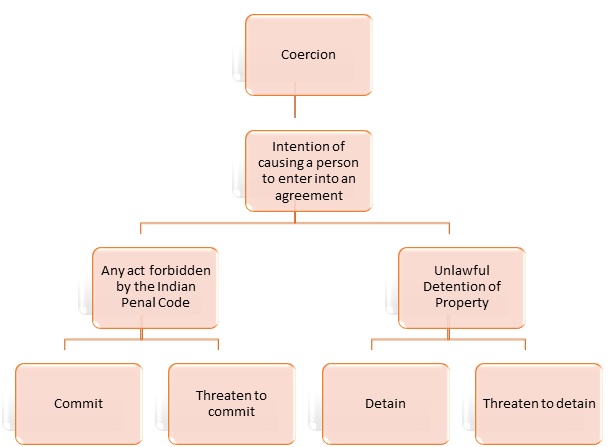Elements of a Crime: Part II
...Continued from Part I. Click here to read Elements of a Crime: Part I
3. ACTUS REUS
Meaning
The Latin word actus means “deed”, an act or a physical result of human conduct. The word reus means “forbidden
by law”. Therefore, Actus Reus together connotes, “such result of human conduct
which is forbidden by law.”[1]
Glanville Williams defines actus reus as:
“When we use the technical term actus reus we include all the
external circumstances and consequences specified in the rule of law as
constituting the forbidden situation. Reus must be taken as indicating the
situation specified in the actus reus as on that, given any necessary mental
element, is forbidden by law. In other words, actus reus means the whole
definition of the crime with the exception of the mental element and it even
includes a mental element in so far as that is contained in the definition of
an act. This meaning of actus reus follows inevitably from the proposition that
all the constituents of a crime are either actus reus or mens rea.”[2]
Glanville suggests that actus reus is the definition of crime without
intention. The whole concept of crime can be summed with actus reus and mens
rea and other elements are inferred from these two elements.
In our personal opinion, it is true. Actus reus may conclude human
being an injury. Some may argue that an attempt might not be included in actus
reus but isn’t attempt an action? If we take an attempt to be a complete action it
would conclude to be a crime in itself. Since an attempt is an act that is
prohibited by law, it would automatically come under the ambit of actus reus.
Actus Reus constitutes three elements:
1. Human conduct that concludes any act;
2. Act shall be prohibited by law;
3. The result of such conduct i.e. injury.
An act is defined as an event that can be controlled by will.[3] In other words, an act refers to any action
committed voluntarily.[4]
In a broader sense, human action constitutes an act of commission as well
as an act of omission.[5] To evaluate the imposition of criminal liability
of any act it should be analysed in three parts:
1. Whether the action was done willingly or by some effect of mental or
bodily insanity;
2. The circumstances in which the act was committed;
3. What are the consequences of the act?[6]
For example, if A shoots B with a rifle which caused the death of B. Then,
Firstly, it has to be proven without any reasonable doubt that A
willingly triggered the rifle. For example, if A while in a fit of epilepsy
strikes and hurts B, A would not be held liable because his actions were not
voluntary.
Secondly, The fact that the rifle is loaded and B was within the range where
rifle could kill him, suggests that the circumstantial evidence was against A.
Thirdly, it has to be proved that the consequence of triggering the
rifle killed B and did not harm him with any other injury nor did harm any other person except him or else A would not be liable for the intended action
but only for the factual circumstance.
An act committed should be prohibited by Law
Strictly speaking, an act committed has to be an act prohibited by law
to constitute a crime. Killing an enemy at the battlefield is not a crime.
Similarly, an act done while exercising the right of self-defense would not be considered
as a crime. For example, if a person is being raped and she in order to escape
throws a glass lamp on the head of the offender due to which he dies. She does
not commit an offence of murder. Likewise, if a person who knows swimming but
does not rescue a drowning child is not liable for any offence, because he was
not duty-bound for such commission and there is no liability stated for such
omission under the code. Therefore, such omission is not illegal.
4. INJURY CAUSED
To constitute an offence, there must be some result/outcome in addition to
the intention and commission of the act by a person. The actus reus should bear a suffering
on society or a particular person. The result of a prohibited act can cause injury to: -
Mind
Human
Property
Association
Society
Etc.
For example, in murder, the result of an action is the death of the victim
brought by the conduct of the accused e.g., firing a bullet at the victim. If
the commission of the prohibited act is completed it is immaterial with that
which activity led to the event/crime, what becomes substantial is which crime
is committed. However, when the commission of the act has not completed the
question of how the act was committed and the intention behind it is important
since in that case, the injury involved would also be mental. Though if the act is
not committed the accused is not liable for the intended act but for an attempt of
it.
For example, A throws a knife at B in order to kill him, but the knife
caused a slight injury to his leg. A would not be liable for murder but attempt
to murder and for causing grievous injury or hurt accordingly.
[1] J W
Cecil Turner, Kenny’s Outlines of Criminal law, 19th Edn, Cambridge University
Press, 1966, p 17.
[2]
Glanville Williams, Criminal Law: The General Part, second edn, Stevens & Sons,
1961, p 18.
[3]
Monrad and Kadish, Criminal Law and Its Processes, 1962, p 212.
[4] SS
Huda, Principles of Law of Crimes in British India, Calcutta: Butterworth,
1903, pp 14-16. Examples may be found in old legal institutions of punishment
inflicted on animals as well. See also J W C Turner, Russell on Crime, vol I,
12th Edn, 1964, pp 22-60.
[5]
Indian Penal Code 1860, section 32.
[6]
Monrad and Kadish, Criminal Law and its Processes, p 213.
References
1. Indian Penal Code 1860
2. K D Gaur, Criminal Law-Cases and Materials, 9th ed.
3. Ratanlal and Dhirajlal, Law of Crimes, 23rd Edn, 1991.
4. PSA Pillai: Criminal Law,12th Edition.
5. Krishna Murari Yadav, Indian Penal Code, 1860.



Comments
Post a Comment